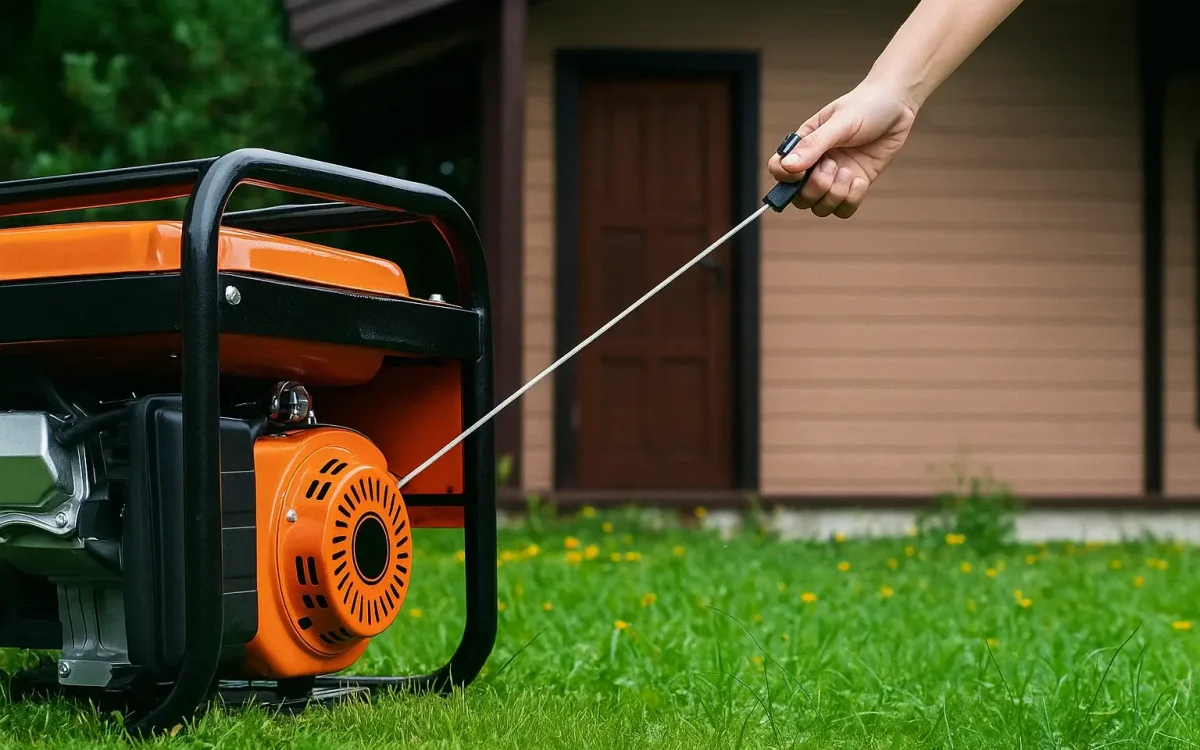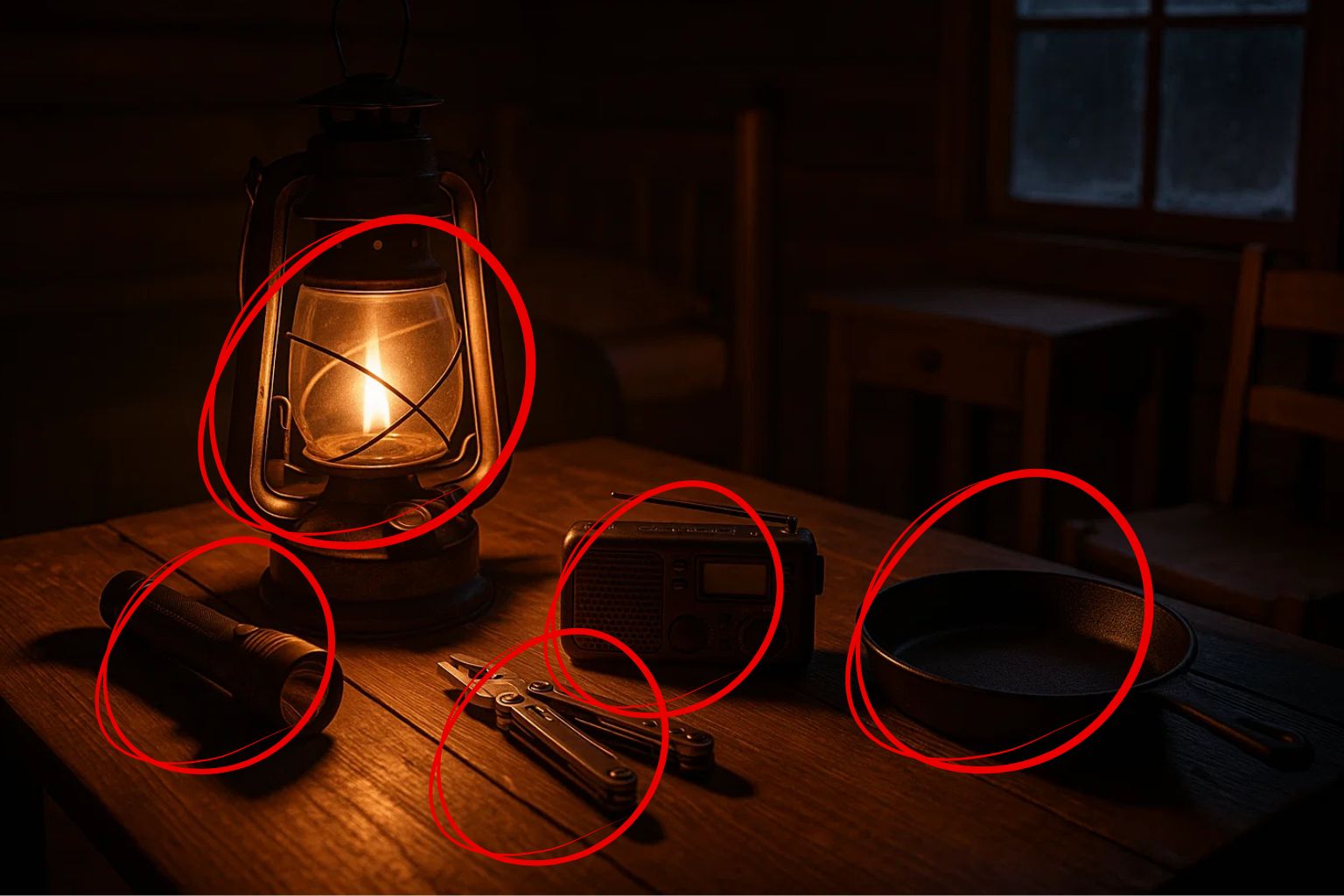Every prepper knows that a generator is more than just a tool, it’s a lifeline. It keeps the lights on, the food frozen, and the essentials running when the grid gives up. But most people only discover the limits of their generator the hard way, when it fails at the worst possible time.
The truth is, generator manuals are written for weekend users, not for those preparing to live independently or ride out a crisis. They skip over the real issues that cause engines to seize, fuel to rot, or wiring to burn out under stress. And they never mention the small, preventable mistakes that silently destroy a generator long before you even pull the cord.
If you want your backup power to be more than a false sense of security, you need to know what the manual won’t tell you. Let’s uncover the hidden dangers that take down generators, and how to keep yours ready for the moment you truly need it.
Fuel Decay
Gasoline isn’t built for storage. Within a few weeks, it starts to oxidize and form sticky varnish that clogs carburetor jets and fuel lines. Ethanol blends make it worse by pulling in moisture from the air, separating into water and alcohol, and corroding metal components. That’s how so many “ready” generators end up dead after sitting in a shed for a season.
The fix is simple: treat every batch with fuel stabilizer, store it in sealed metal cans, and rotate your stock every few months. Once a month, run the generator for ten minutes to keep fuel fresh and gaskets lubricated. It’s cheap insurance against the most common cause of generator failure.
Overloading
Pushing a generator too hard is a slow burn you can’t see. When you run it near full load for long periods, the copper windings overheat, insulation breaks down, and voltage output starts to dip. Keep doing it, and you’ll cook the alternator from the inside, one surge away from a total burnout. Most manuals warn against “overloading” but never explain that the real damage happens gradually, not instantly.
To avoid it, keep your continuous load under 80% of rated capacity. Use a watt meter to measure what each appliance draws, and stagger startup times for big power users like refrigerators and pumps. A little load discipline will keep your generator cool, efficient, and ready for the long haul.
Dirty Air Filters
Engines need clean air as much as they need clean fuel. When the air filter clogs with dust or oil, airflow drops and the engine runs rich, too much fuel, not enough oxygen. That causes black smoke, fouled spark plugs, and sluggish performance. In a long outage, this kind of slow suffocation can waste gallons of fuel and cut your runtime short.
Check your filter every 25–50 hours of operation, or more often in dusty areas. Clean or replace it before it darkens or feels oily, and always keep a few spare filters sealed in plastic with your fuel stock. It’s one of the cheapest ways to keep your generator breathing, and running, when everything else goes wrong.
Backfeed Risk
Backfeeding happens when someone plugs a generator directly into a household outlet, trying to power the whole home through existing wiring. It might seem like a shortcut, but it’s incredibly dangerous. That reverse current can energize external power lines, electrocuting utility workers or anyone touching the grid outside your property. It can also fry your generator, melt wiring, and start an electrical fire inside your walls.
The only safe way to connect a generator to your home is through a transfer switch or an interlock kit installed by a qualified electrician. These devices isolate your system from the grid while safely routing power to selected circuits. Never “backfeed”, it’s not clever, it’s lethal.
Wrong Oil for the Weather
Oil that’s too thick in the cold won’t circulate fast enough at startup, leaving bearings and piston walls dry when they need lubrication most. In hot weather, oil that’s too thin loses pressure and protection, causing accelerated wear and heat buildup. Both mistakes quietly destroy engines long before you notice the damage.
Here’s a simple guide:
- Use 5W-30 for cold weather below 20°F (-6°C).
- Use 10W-30 for normal temperatures between 20°F and 90°F.
- Use 10W-40 or SAE30 when it’s consistently above 90°F.
Check your oil before every run, and change it after the first 25 hours on a new generator, then every 50–60 hours of operation. It’s quick, cheap protection that keeps your engine alive for years.
Storage: Where Most Generators Quietly Die
Generators usually fail during storage, not operation. When left idle for months, fuel turns to varnish, moisture causes corrosion, and rubber gaskets dry out. Even worse, rodents can chew wiring or build nests inside the housing.
Old fuel gums carburetors and blocks jets, while condensation inside the tank leads to rust. These small issues build up until the engine won’t start when you need it most.
To prevent this, drain or stabilize the fuel, start the generator monthly, and store it in a dry, ventilated area. Keep it off damp floors and cover it loosely to allow airflow. A few minutes of monthly care keeps it ready for any outage.
Stealth and Safety
Generator manuals don’t mention it, but noise is a real liability. During a blackout, the steady hum of an engine carries for blocks, straight to thieves, looters, or desperate neighbors looking for a power source. What sounds like security to you can sound like opportunity to someone else.
Sound travels farther at night and in still air, so even a small generator can give away your position. To reduce noise, use sound baffles or plywood barriers, mount the generator on rubber pads, and place it behind walls, fences, or natural cover.
For security, chain it to a fixed object, drive anchor spikes through the frame, and camouflage it with tarps or foliage that don’t block airflow. Quiet, hidden, and secured, that’s how a generator should stay in any real crisis.
Diagnosing Trouble Before It Happens
Good generators rarely fail without warning, they whisper first. A rough idle, sudden vibration, strange smell, or change in tone usually means something’s wearing out. If you pay attention, you can catch problems long before they turn into breakdowns.
Watch for surging RPMs, flickering lights, oil spots under the frame, or unusual smoke. These are early signs of fuel delivery issues, electrical trouble, or oil pressure loss. Don’t ignore them; fix them while the parts are cheap and available.
Keep a simple generator logbook. Note the date, run time, oil changes, and any odd behavior after each test run. Over time, small patterns reveal big problems, and that habit alone separates the prepared from the panicked.
Quick Generator Survival Checklist
- Stabilize fuel every 3–6 months.
- Keep load under 80% of continuous capacity.
- Replace or clean the air filter regularly.
- Use the correct oil grade for the season.
- Test-run monthly for at least 10 minutes.
- Never backfeed, always use a transfer switch or interlock kit.
- Store under cover, in a dry, ventilated spot.
- Keep spare spark plugs, oil, and filters ready.
Generator manuals are written to protect warranties, not lives. They teach operation, not survival. In a real crisis, the difference between a running generator and a dead one comes down to what you know, not what’s printed on the safety label.
A prepper’s job is foresight. You don’t wait for something to fail before learning how to fix it. You plan ahead, rotate fuel, check filters, and listen for warning signs. That mindset, attention before disaster, is what separates preparedness from panic.
Treat your generator like any other piece of survival gear: maintain it, test it, and know it inside out. When the lights go out, you won’t be fumbling with a manual, you’ll be flipping the switch on peace of mind.
The Video Every Prepper’s Talking About:




























